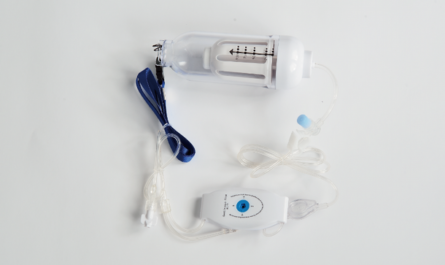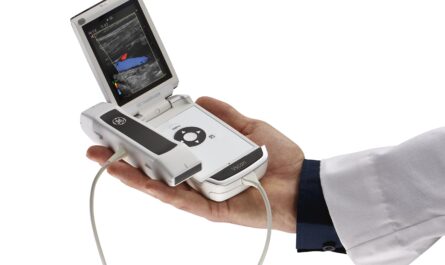
What is Epidermal Growth Factor?
Epidermal growth factor (EGF) is a protein that plays an important role in cell growth, proliferation, and differentiation. It was first isolated from the submaxillary glands of mice by Dr. Stanley Cohen in 1962. EGF signals through the EGF receptor, a receptor tyrosine kinase present on the surface of many cell types. When EGF binds to its receptor, it triggers intracellular signaling pathways that promote processes like DNA synthesis, protein synthesis, and cell division. Naturally occurring EGF is secreted by various tissues in the body and aids in processes like embryonic development, wound healing, and regulation of organ size.
Production of Recombinant Human EGF
While mice and human EGF share a high degree of sequence identity, researchers wanted to produce rhEGF to develop therapeutic applications for human use. In 1986, Genentech successfully produced rhEGF using genetic engineering techniques. They extracted the human EGF gene and inserted it into E. coli bacteria to be mass-produced. This allowed for a scalable production process to generate large quantities of pure rhEGF identical to the native human protein. The availability of consistent and plentiful rhEGF enabled clinical studies to evaluate its potential therapeutic benefits.
Wound Healing Applications of rhEGF
One major area of research involving rhEGF has been its use for wound healing. Several preclinical studies found that application of rhEGF to dermal wounds in animal models enhanced re-epithelialization, collagen deposition, neovascularization, and overall healing rates. This prompted clinical trials evaluating rhEGF gel or spray formulations applied topically to chronic wounds in human patients. The results of these trials demonstrated that rhEGF treatment accelerated wound closure compared to standard care alone. No significant safety issues were observed. Based on these promising findings, the United States Food and Drug Administration approved a rhEGF gel product called Regranex in 1998 for the treatment of lower extremity diabetic neuropathic ulcers.
Effects of rhEGF on the Wound Healing Process
So how exactly does rhEGF aid wound healing at a cellular and molecular level? When it binds to EGF receptors on cells near a wound site, rhEGF initiates signaling cascades that stimulate several aspects of repair. It promotes re-epithelialization by stimulating the migration, proliferation, and attachment of keratinocytesneeded to replace lost epidermis. rhEGF also enhances angiogenesis by inducing the formation of new blood vessels from existing vasculature. This improved blood flow brings nutrients and oxygen to support regeneration. Additionally, rhEGF stimulates the proliferation and activity of fibroblasts, which lay down new collagen and reform the dermal layer. All of these wound healing responses triggered by rhEGF converge to restore structural and functional integrity to injured tissues more rapidly.
Other Potential Applications
Beyond wound healing, researchers are exploring additional therapeutic uses for rhEGF. A promising application is in head and neck cancer reconstruction. When combined with tissue flaps used in reconstructive surgery after tumor removal, rhEGF helps improve flap survival rates and healing. It may also find use adjunctively with skin grafts to optimize engraftment. Preclinical studies even indicate rhEGF could aid repair of injuries to the cornea or promote recovery after radiation-induced oral mucositis. Its mitogenic and anti-apoptotic properties provide rationale for developing rhEGF formulations to treat lung injuries, acute renal failure, and other conditions involving epithelial repair and remodeling. As the mechanisms of rhEGF continue to be elucidated, new strategies for leveraging its wound healing properties will likely emerge.
Future Directions
While recombinant technology now allows for large-scale production, researchers continue optimizing rhEGF delivery methods. Some innovations include engineered peptide carriers to protect rhEGF from degradation and target it specifically to injured tissues. Nanomedicine approaches also aim to develop rhEGF-loaded nanoparticles, hydrogels, or films offering controlled release at wound sites over extended periods. With appropriate formulation and delivery strategies, rhEGF dosing could possibly become more efficient and cost-effective for clinical translation. Looking ahead, combination therapies applying rhEGF with other growth factors may yield even greater healing effects through synergistic signaling networks. As the biologics revolution unfolds, recombinant versions of EGF and related proteins hold great potential to revolutionize care of acute and chronic wound conditions.
In summary, over three decades of research have established recombinant human EGF as a protein with remarkable wound healing properties. Continued developments in rhEGF production, formulations, and delivery stand to expand its clinical use considerably in years to come. By exerting pleiotropic effects on re-epithelialization, angiogenesis and tissue remodeling, rhEGF harnesses key intrinsic mechanisms of repair. This positions it as a powerful tool to help patients with both surgical and non-healing wounds recover more quickly.
*Note:
- Source: Coherent Market Insights, Public sources, Desk research
- We have leveraged AI tools to mine information and compile it



